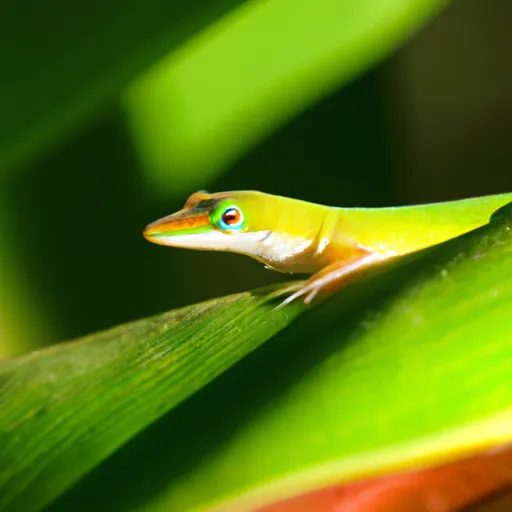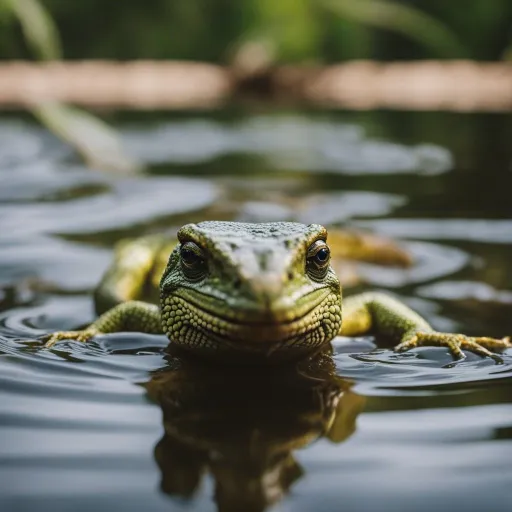So you’re curious about the lifespan of anole lizards, huh? Well, you’ve come to the right place!
In this article, we’re going to uncover the secret behind how long these fascinating creatures can survive in the wild.
Whether you’re an animal enthusiast or just looking to impress your friends with some lizard knowledge, stick around as we explore the lifespan and factors that contribute to the longevity of anole lizards.
Get ready to discover the hidden world of these scaly creatures and their remarkable endurance.
Factors Affecting Anole Lizard Lifespan
When it comes to the lifespan of anole lizards, several factors come into play. The genetic makeup of an individual, the species it belongs to, its gender, and the environmental conditions it experiences all play a role in determining how long an anole lizard will live.
Genetics
Genetics play a significant role in the overall health and lifespan of anole lizards. Just like humans, lizards inherit certain traits and predispositions from their parents. Some genetic factors can increase an anole lizard’s lifespan, such as having genes that promote overall health and resilience to diseases. On the other hand, inheriting certain genetic conditions can also shorten their lifespan.
Species
Different species of anole lizards have varying lifespan ranges. Each species has unique adaptations and characteristics that influence their longevity. Some anole lizard species have a shorter lifespan, while others can live significantly longer. Understanding the lifespan range of each species is essential for determining what is normal and expected for that particular type of anole lizard.
Gender
Gender also plays a role in anole lizard lifespan. Sexual dimorphism, which refers to the physical differences between males and females, can impact their overall health and lifespan. In some species, males may have shorter lifespans due to the energy-intensive nature of certain behaviors, such as mating displays or territorial disputes. Females, on the other hand, may have longer lifespans due to their role in reproduction and nurturing offspring.
Environmental Conditions
The environmental conditions in which an anole lizard lives can greatly influence its lifespan. Factors like climate, temperature, availability of food and resources, and exposure to predators all come into play. An anole lizard living in an ideal habitat with ample food and few threats will generally have a better chance of living a longer life compared to those in more challenging environments.

Average Lifespan of Anole Lizards
While there are numerous species of anole lizards, we will focus on the average lifespan of four common species: the Green Anole (Anolis carolinensis), Brown Anole (Anolis sagrei), Cuban Anole (Anolis porcatus), and Knight Anole (Anolis equestris).
Green Anole (Anolis carolinensis)
The Green Anole is a widely recognized and popular species of anole lizard. In captivity, they can live for around four to eight years. However, in their natural habitat, their average lifespan is typically shorter, ranging from one to two years. Numerous factors can influence the lifespan of Green Anoles, and understanding them is crucial for their proper care.
Brown Anole (Anolis sagrei)
Brown Anoles are another common species found in the southeastern United States and the Caribbean. These lizards have a slightly shorter lifespan compared to Green Anoles. On average, Brown Anoles live for approximately two to four years. However, some individuals have been known to live up to six years in captivity. The lifespan of Brown Anoles can be influenced by a variety of factors, such as diet, habitat quality, and reproductive success.
Cuban Anole (Anolis porcatus)
Native to Cuba and the Bahamas, the Cuban Anole is known for its vibrant colors and impressive ability to change its skin color. These lizards have a similar lifespan to Green Anoles, typically living for around one to two years in their natural habitat. However, in captivity, they can live slightly longer, with some individuals reaching three to five years of age. Environmental conditions and availability of resources are significant factors that can impact the lifespan of Cuban Anoles.
Knight Anole (Anolis equestris)
The Knight Anole, known for its larger size and robust build, has a longer lifespan compared to other anole lizard species. In their native habitat of Cuba and other Caribbean islands, Knight Anoles can live for approximately five to seven years. However, in captivity, with proper care and husbandry, they have been known to live up to ten years or more. Habitat quality, diet, and genetic factors all contribute to the lifespan of Knight Anoles.
Factors That Can Influence Anole Lizard Lifespan
Beyond genetic factors, species, gender, and environmental conditions, several other factors can influence the lifespan of anole lizards. These factors include diet and nutrition, predators and threats, habitat quality, and mating and reproduction.
Diet and Nutrition
An anole lizard’s diet plays a crucial role in its overall health and lifespan. A balanced diet that provides the necessary nutrients, vitamins, and minerals is essential for their well-being. An insufficient or imbalanced diet can lead to nutritional deficiencies, weakened immune systems, and a shorter lifespan. Offering a variety of live insects, supplemented with calcium and vitamins, can help ensure proper nutrition for anole lizards.
Predators and Threats
Anole lizards face various predators and threats in their natural habitats. Predatory birds, snakes, mammals, and even other lizards can pose a risk to their survival. Anoles with effective anti-predator behaviors and adaptations have a better chance of avoiding predation and living longer. Additionally, exposure to parasites, diseases, and injuries sustained during predator encounters can also impact anole lizard lifespan.
Habitat Quality
The quality and suitability of an anole lizard’s habitat can significantly affect its lifespan. A well-maintained habitat with the necessary elements, such as appropriate temperature, humidity, hiding spots, and basking areas, will promote the overall health and longevity of anole lizards. Inadequate or suboptimal habitat conditions can lead to stress, reduced immune function, and an increased risk of disease, ultimately shortening their lifespan.
Mating and Reproduction
The reproductive behaviors and strategies of anole lizards can also influence their lifespan.
Males often engage in energy-intensive behaviors, such as aggressive territorial displays and courtship rituals, which can put them at higher risk of injuries and predation.
Females, on the other hand, may experience physiological stress during reproduction, particularly during egg-laying.
The reproductive success and the ability to pass on their genes also play a role in the overall fitness and lifespan of anole lizards.
Final Thoughts
In conclusion, the lifespan of anole lizards is influenced by a combination of genetic factors, species-specific traits, gender-related differences, and environmental conditions.
Understanding these factors and addressing their needs appropriately can contribute to the health and longevity of anole lizards in captivity or the wild.
By providing a suitable habitat, balanced nutrition, and minimizing threats, we can help these fascinating creatures lead longer, healthier lives.



